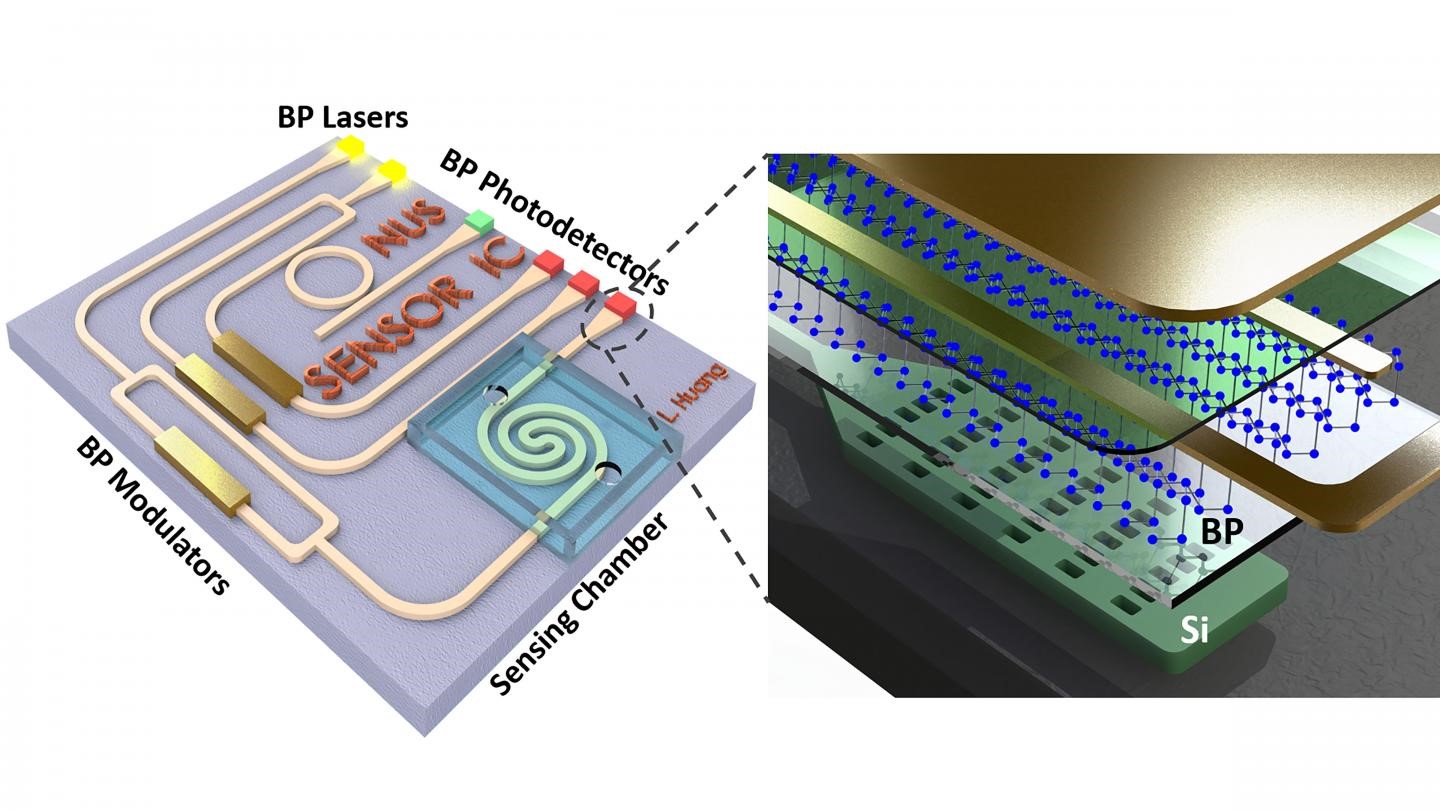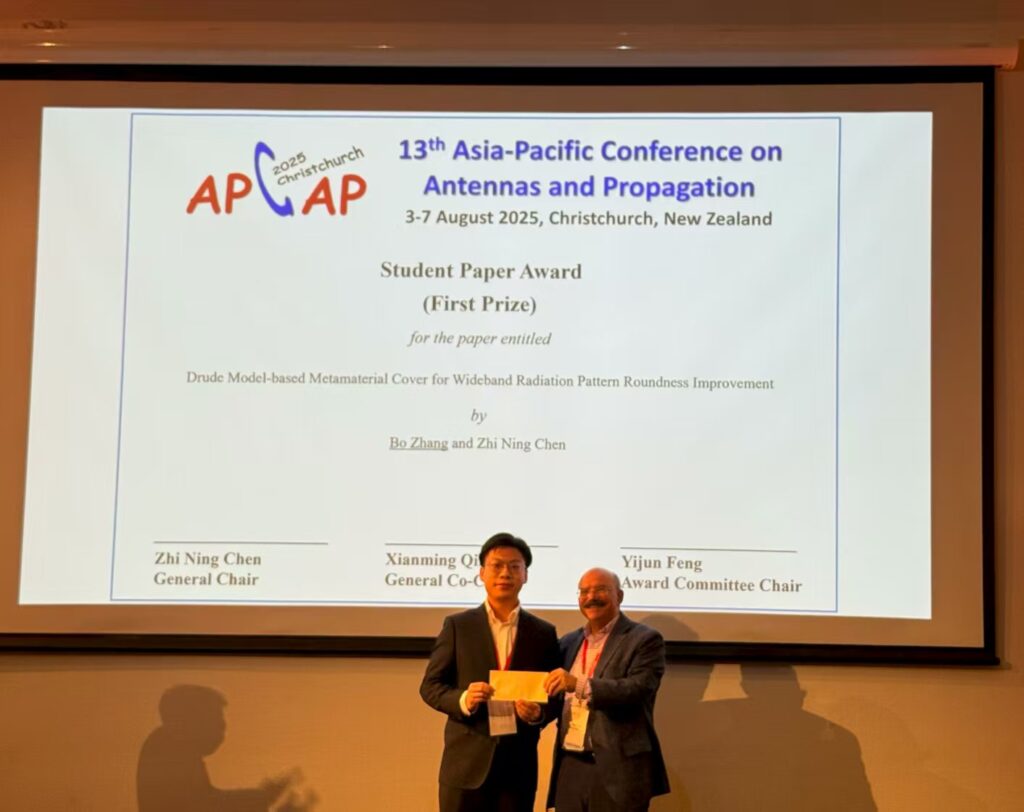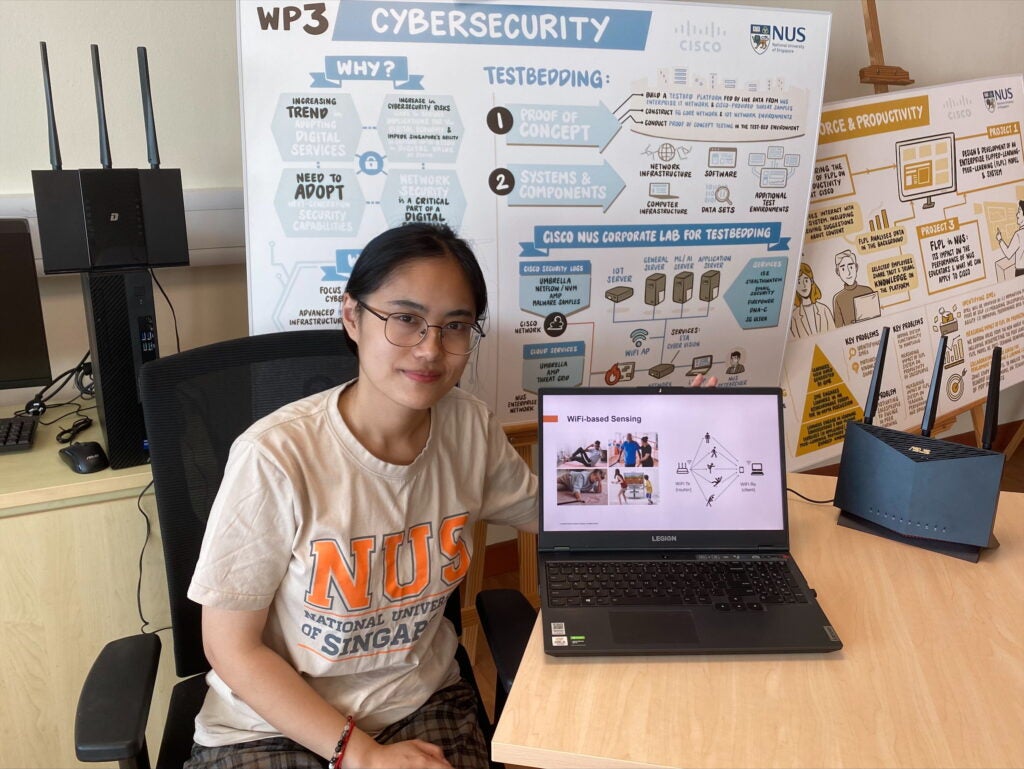Applications such as bio-molecular sensing, medical diagnostics and environment monitoring have been motivating the research in mid-infrared technology. However, the compatibility issue among traditional materials remains a challenge in realising chip-scale mid-infrared systems.
Two-dimensional black phosphorus may overcome this challenge by providing versatile functions for mid-infrared manipulation. Recently, a research group led by Assoc. Prof. Ang Kah Wee from NUS Department of Electrical and Computer Engineering assesses the progress on black phosphorus optoelectronics, revealing the material’s potential in diversified functions varying from photodetection, light modulation to laser generation.
|
|
In the paper titled “Black Phosphorus Photonics Toward On-Chip Applications” which appeared in the Applied Physics Review in July 2020, Assoc. Prof. Ang and his research team proposed a pathway to integrate the different components through a hybrid platform based on black phosphorus and silicon photonics, as preliminarily demonstrated by their previous works of waveguide-integrated photodetector and modulator.
Compared to conventional materials, black phosphorus could achieve higher detection sensitivity and stronger modulation strength. Its unique crystal structure also enables the detection and control of light polarization, with potential applications such as analysing 3D structures and enhancing imaging resolutions.
|
|
The team believes that black phosphorus could be an essential material to advance mid-infrared technology if bottlenecks such as large-scale growth could be overcome. The article for the research has been published in Applied Physics Reviews (https://doi.org/10.1063/5.0005641), and a news release covering the research is published in EurekAlert,
AAAS (https://www.eurekalert.org/pub_releases/2020-07/aiop-bpf072220.php).







